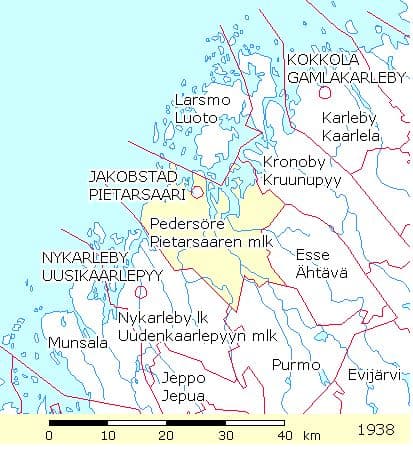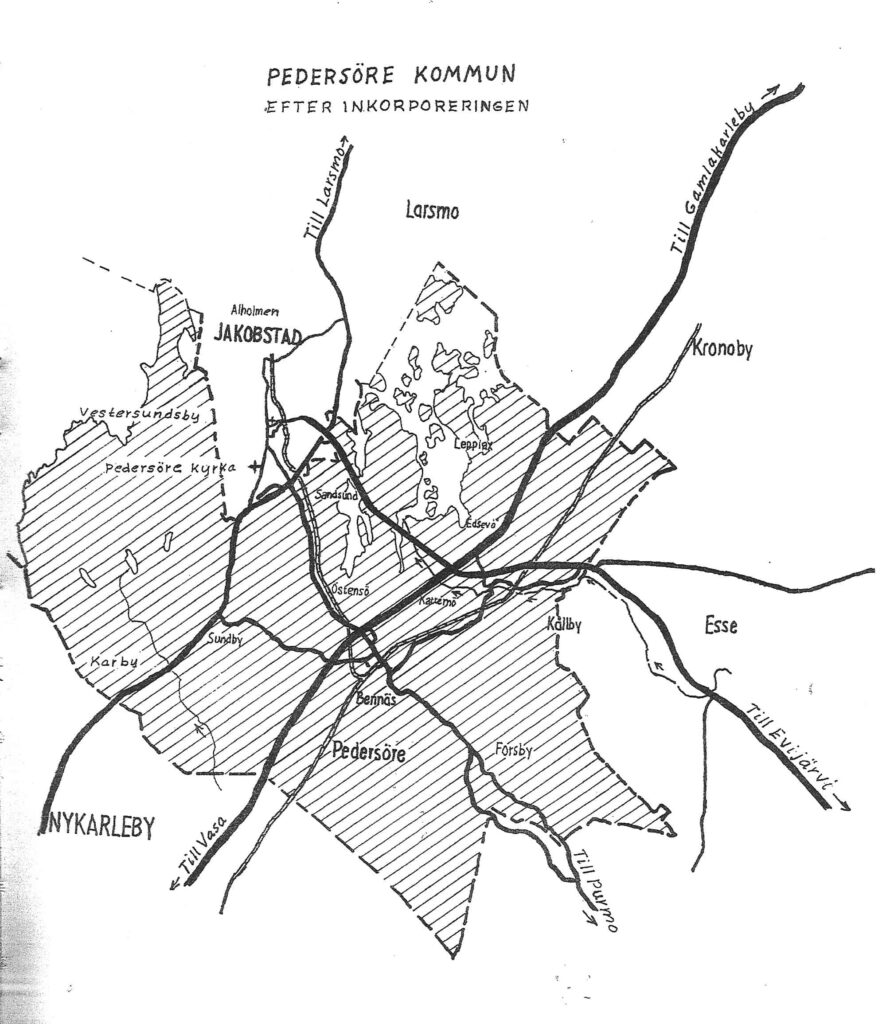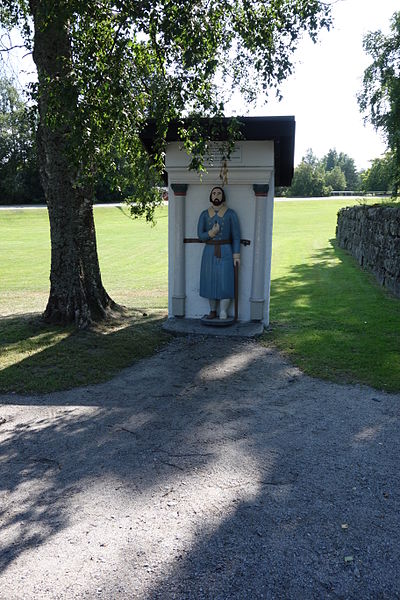Ostrobothnia
Pedersöre
Parish History
There is no record of exactly how old Pedersöre is, but it is one of three original parishes in the Gulf of Bothnia. It was first mentioned in writing in 1348 when Swedish King Magnus Eriksson issued a statute concerning trade in the parishes of Korsholm, Närpes and Pedersöre.4, 10
Over the years as rural areas became more populated, they often became parish chapels under the original or ‘mother’ parish. Parishioners could then request their chapel rites be expanded to become an independent parish. In doing so, part of the original parish land became the new parish.
In about 1490, Karleby became its own parish by splitting from Pedersöre. The same is true for:
- Larsmo in 1864
- Esse in 1865 4
- Purmo in 1865 4
- Jakobstad in 1907
The city of Jakobstad is located within the boundaries of Pedersöre. Like other larger cities, the city dwellers with their dense population formed their own city parish, and those in the surrounding rural areas made up another parish or parishes.
Parish Records
Because parish Communion records are listed by farm name and because farm names often were used as a part of a person’s name, it is interesting to note the following farms.
Villages and farms of Pedersöre were recorded in T.W. Karsten’s work, Svesk Bygd I Osterbotten: Nu Och Fordom. 5 Pedersöre Parish Communion records were not used to confirm these findings.
To open a printable list of villages and farms (pdf), click here.
Farms
- Kristola
- Gunnila
- Skruv
- Storgärd
- Bredarholm
- Blässar
- Riv
- Bonde
- Lillmåns
- Jå
- Kock
- Gunn
- Stormåns
- Björn
- Inborr
- Niss
- Hermans
- Grägg
- Mård
- Käld
- Barkar
- Finne
- Pellis
- Kull
- Bur
- Fors
- Skult
- From
- Vik
- Lille
- Styrmans
- Smeds
- Knuts
- Raj
- Kråknäs
- Pil
- Nicks
- Kass
- Kalvholm
- Frans
- Katt
- Skutnabbe
- Starra
- Storstara
- Staffansnäs
- Brännäs
- Bagarnäs
- Smeds
- Kivilös
- Österkvilös
- Lill sandsund
- Sandsund
- Piriliö
- Nygård
- Rosenlund
- Pettil
- Sudd
- Strang
- Storkåll
- Lillkåll
- Kittel
- Torp
- Tarvonen
- Timonen
- Åman
- Abbors
- Väll
- Bodä
- Svensbacka
- Klubb
- Ämptöö
- Södö
- Söderholm
- Skepparnabba
- Riv
- Lunabba
- Finne
- Löv
- Sack
- Lövö
- Kullnabba
- Björn
- Murmästar
- Greve
- Strömsnäs
- Förste
- Hovslagars
- Gästgivars
- Vannäs
- Nymans
- Finnäs
- Kåll
- Grägg
- Sandbacka
- Holländer
- Nybonde
- Storkassnäs
- Lillkassnäs
- Barkar
- Degernäs
- Nygård
- Hummeljuts
- Västersund
- Sund
- Skutnäs
- Skutvik
- Kisor
- Kiv
- Torp
- Pörkenäs
- Nabba
- Bodnäs
- Pinnenäs
- Östensö
- Pers
- Gästgivars
- Klubb
- Gota
- Tarvos
- Isaka
Parish Church
The Pedersöre Church is in the heart of Jakobstad (once called Kyrkobyn – which means the church village). It is one of Ostrobothnia’s oldest medieval churches. 8 The oldest parts of the current church are from the church dated back to the 1400s. 7
During the Great Strife, at the beginning of the 1700’s the church was badly vandalized. 8
In 1778 work began to renovate the old church. Renovation included altering the rectangular, stone buildings’ shape to an equal-arm cross church. The drawings of the renovated church were first approved by King Gustav III. Thirty-three-year-old Jacob Rijfs was responsible for the renovation. The drawings were followed, but not exactly to the word. A 65m high spire from the original plan was kept. The spire is believed to have been modeled after the 1490 Storkyrkan tower in Stockholm. The construction was completed in 1795. 7
A wooden bell tower was built in 1689. But in the 1760’s it was found to be dilapidated and a new one needed to be built. 8 The new bell tower was built under the supervision of Thomas Rijf and Matt Honga between 1769 and 1775. It was built using stone on the ground floor and wood on the upper portion, which is in typical Ostrobothnia style.7
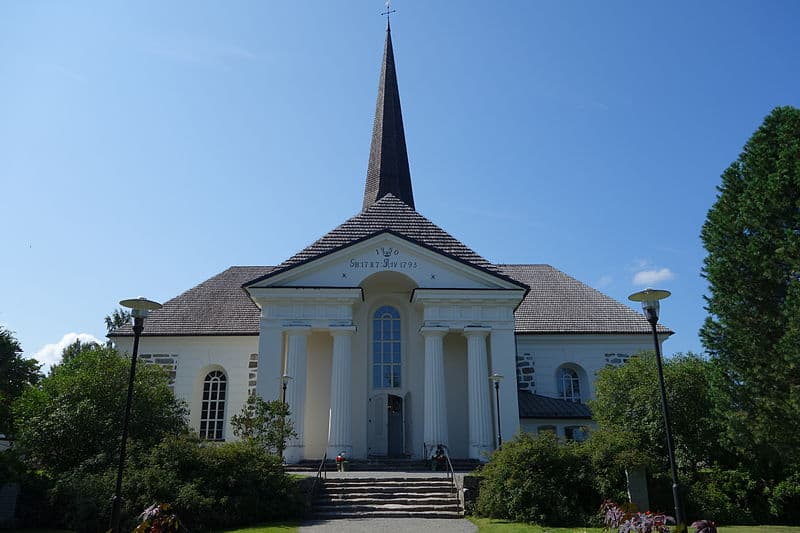
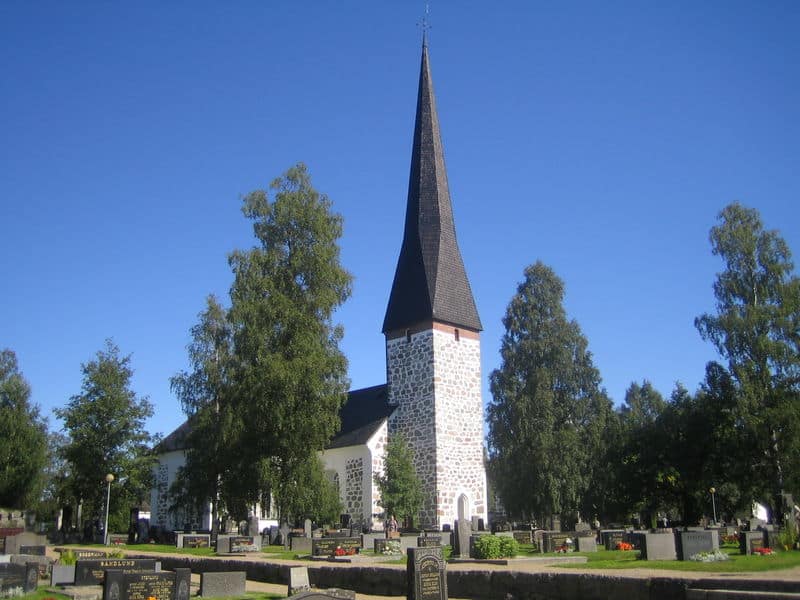
References
- Akerblom, Bror, Pedersöre Historia III: 1865 – 1965, Pedersore Kommuns Förlag, Jakobstad 1971, p 7
- Genealogical Society of Finland, HisKi project, Pedersöre parish, HiSki project, http://hiski.genealogia.fi/hiski/a3gpun
- Jakobstad Pedersöre church image, https://commons.wikimedia.org/wiki/File:Jakobstad_Pedersore_church.jpg
- Jensen, Alicia, ‘Discovering Swedish Speaking municipalities: Pedersöre’, Helsinki Times, Jan 16, 2015
- Karsten T.W., Svesk Bygd I Osterbotten: Nu Och Fordom; Helingfors, 1923, pages 191 – 200
- Pedersöre, https://sco.wikipedia.org/wiki/Pedersöre
- Pedersöre Church, https://en.wikipedia.org/wiki/Pedersöre_Church
- ‘Pedersöre Church and Jakobstads Tidning’, from the brochure Pedersöre Kyrka and Jakobstads Tidning, translated by June Pelo, printed in the SFHS Quarterly Vol 5 #4, pages 100 -101
- Pedersöre Folk Costumes, Brage, https://www.brage.fi/sve/draktbyra/draktbyran/folkdrakter/view-163648-13
- Pedersöre Historia, https://www.pedersore.fi/kommun-och-politik/pedersore/historia/
- Pedersore Fattismanskassa; https://commons.wikimedia.org/wiki/File:Fattigmanskassa_ved_Peders%C3%B6re_kyrka.JPG

